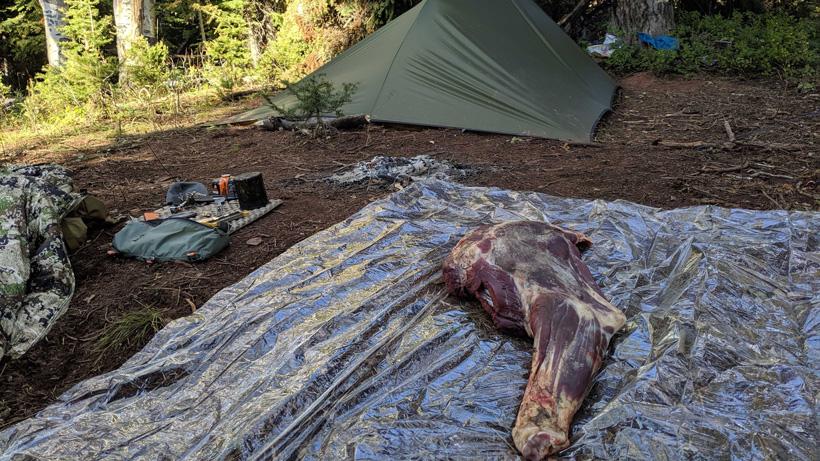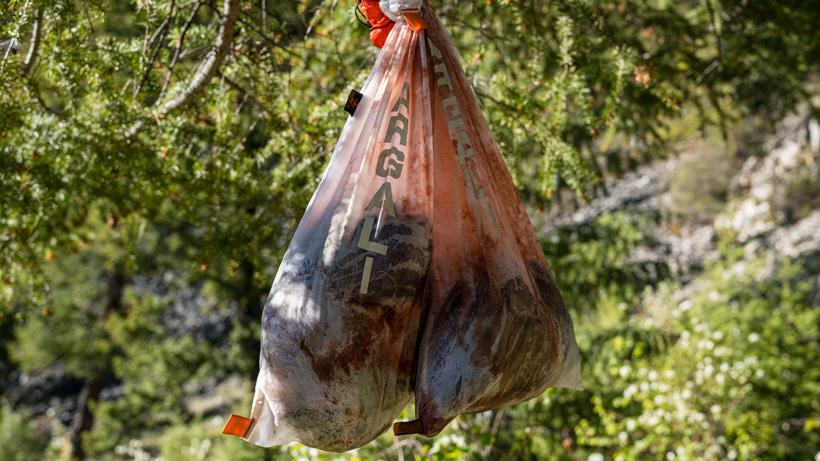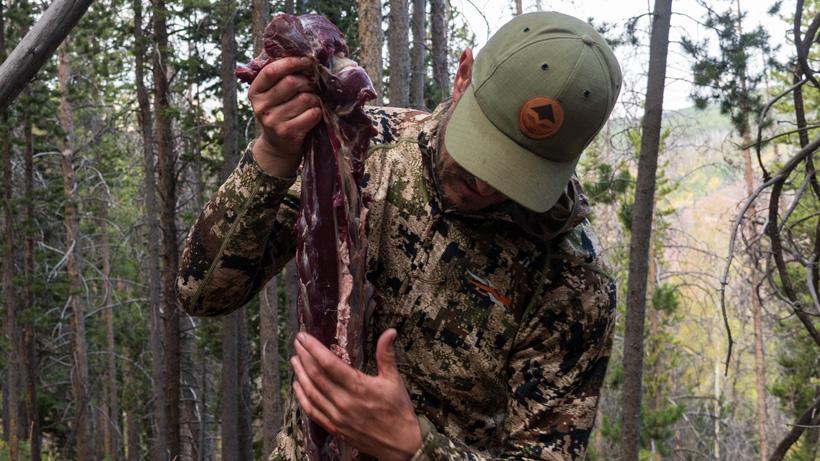




Photo credit: Trail Kreitzer

Photo credit: Brady Miller

Photo credit: Sam Sarbacher
Photo credit: Brady Miller
There is a lot of talk about post-harvest meat care these days and tons of information that science can back up. Hunters will argue the aging process, leaving the hide on the quarters and the meat on the bone. Though science can back up many of these practices, some realities have to be set in when you are in the field. Not every situation is right to leave the skin on the animal or the meat on the bone, despite the culinary benefits of this strategy. Here are three reasons you might think about removing the animal down to boned-out meat next time you are hunting and become lucky enough to harvest an animal.
Photo credit: Trail Kreitzer
Whenever we are fortunate enough to harvest an animal, the number one concern of every moral and ethical hunter is preserving the meat. Although we often hunt for trophy quality animals, the true prize we receive is harvesting our meat to take home, but the challenge of handling it correctly can sometimes be unknown. This is why removing the hide and even removing the meat from the bone is recommended as the best option — especially on larger animals or in above-average temperatures. This is especially true when temperatures are above 60 degrees and the meat will be slow to cool. Ultimately, to prevent spoilage, your goal is to reduce the temperature of the meat from approximately 100 degrees to less than 70 to 80 degrees within the first hour or so. You can do this by exposing the meat to airflow and allowing the heat to dissipate. After that, you have to get the meat down to a 35 to 45-degree temperature as soon as possible. Ultimately, there are situations where the air temperature is cold and leaving the meat on the bone or leaving the hide on the meat will present no issues. There are also situations where your number one goal should be to get the meat out of the hide and off the bone. When in doubt, always debone everything as quickly as possible to prevent the spoilage of any meat.
Photo credit: Brady Miller
Though it is often an afterthought when hunting on the public lands of the West, hunters are responsible for getting their meat off the mountain. Unless you are fortunate enough to harvest an animal near a motorized vehicle trail or you have stock, this is normally carried out on the hunter’s back. Since it will be carried on the backs of a hunter and his buddies, it often makes sense to debone an animal instead of simply quartering it. Elk bones and hide can easily add tens if not a hundred extra pounds of weight. While this would likely be split up into numerous trips or multiple people would help carry it, it still means that you are carrying extra weight off the mountain. This weight is not edible or beneficial to you in any way so it might make sense to spend the extra time deboning an animal and leave the extra weight on the mountain. Besides the weight, it is also important to think about the packability of meat. Quarters with leg bones, rib meat with ribs and other parts of the animal are awkward to pack and carry. They stick up high or low and can shift out of position, wreaking havoc on part of your back or legs as your body tries to compensate for this unevenly distributed weight. If you bone out the meat, pack it in a game bag and strap it in tight on your back, it will be more likely to stay in position for the entire hike back.
Photo credit: Sam Sarbacher
The final reason that deboning out your meat is a good idea is because it can reduce your butchering time once you arrive back home. Over half of the work of butchering an animal happens by getting the right muscle groups off of the bone in a way that allows you to get the cuts of meat that you want. If you have already done this in the field — especially with the help of a few hunting partners — your in-home butchering time will be cut in half. Though this is just a minor benefit of deboning your meat in the field, it is worth noting.
It is important to mention that there are plenty of times where leaving the meat on the bone and the hide on the meat is perfectly acceptable; however, there are also times when you would want to reconsider. I always seem to be fortunate — and this is a little sarcasm — to kill my elk multiple miles from my vehicle and I choose to typically debone all of my meat in order to get it cooled quicker, get it back to camp easier and to help it fit easier in my coolers. Then, when I get home, my work is a lot easier because I already have great cuts of meat ready to be prepped and sliced. Of course, some culinary experts will preach leaving the meat on the bone or leaving the hide on and this can be a great technique when applicable; however, it is ultimately up to you to decide in your given hunting scenario. Personally, I have never had a reason to change up my techniques and take great pleasure in knowing that bone sour or rot is less likely to set in. Whatever way you choose to go, it is your responsibility to make all of the right decisions that will aid you in getting the most meat off the mountain in the best condition possible. Good luck this fall.